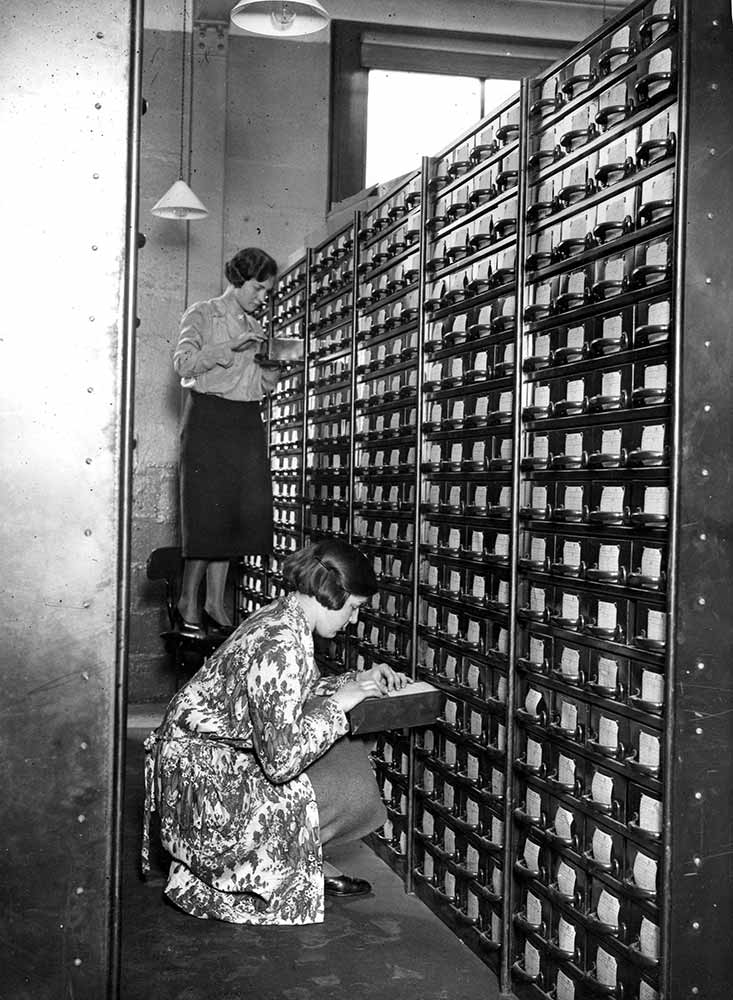Visitors to The National Archives may wonder how records are available to order in the reading rooms, complete with detailed descriptions and so beautifully presented.
I work in the Transfer and Access Department, but used to work as a Transfer Adviser. The Transfer team is vital to the delivery of records to The National Archives and their subsequent release into the public domain via our online catalogue, Discovery. They provide expert guidance on record transfers – the foundation for the regulated records management of The National Archives.
The easiest way to explain the process is if I describe it rather like a journey…
How records are checked
All records transferred to The National Archives complete a transit from ‘A’ to ‘B’, where ‘A’ is the parent department of a given record and ‘B’ is The National Archives’ repositories at Kew.
In order for records to make this journey, a Transfer Adviser must first perform a series of quality assurance checks.
A Transfer Adviser is a source of expertise that government departments draw on to ensure that accurate cataloguing is supplied to The National Archives, and that a record’s physical preparation is of an acceptable standard to be presented in our reading rooms and preserved in our repositories. A thorough quality assessment can only be made through a full inspection of the records at the transferring department.
Following the appraisal and selection of the records by the Information Management Consultants, Transfer Advisers travel the country to where records are located to carry out physical preparation and cataloguing checks.
Travelling nationwide is certainly one of the perks of the job. It is quite a privilege and experience to witness the day-to-day goings-on at our fellow government departments. The days are long, and a typical visit requires us to rise at the crack of dawn… and sometimes earlier. But if two or more Transfer Advisers attend the same visit, the moral support, combined with strong coffee, soon shakes off the 5am blues.
The beauty of a Transfer Adviser’s role is that there is not really any other role like it, and generally no two days are ever really the same. Working hours are split between the office and a government department, and depending on the volume of records which need to be checked, Transfer Advisers can spend as much as four days out at a department in any one week.
Once on site at a government department we perform checks on both the cataloguing and physical preparation of records, before providing the appropriate feedback to departmental representatives.
Cataloguing checks include comparing the information contained within records against the metadata which has been pre-populated by the government department in the cataloguing template. It is worth pointing out that the information you see displayed on Discovery began life as metadata in a strategically designed template – known to Transfer Advisers as the cataloguing template. This template is designed to allow information describing the records to be easily loaded onto Discovery following their transfer to The National Archives. All records that appear on Discovery display various fields of metadata relating to their content, including covering dates, The National Archives’ references and detailed subject descriptions. Collectively, this information makes records easier to search and browse: the better the metadata, the quicker the search and the more accurate the results.
Physical preparation checks involve checking that the physical state of the records matches the standard outlined in the guidance available on The National Archives’ website. Additionally, and probably most importantly, we do access checks which involve checking that closed or retained material is appropriately protected and presented in both the file and the cataloguing template.
There is no order in which Transfer Advisers perform their checks, and each individual has their own style and technique. The number of records a Transfer Adviser can process during a visit depends on how well the files have been prepared, and how easy or difficult the content is to assess for cataloguing checks. The most rewarding part of being a Transfer Adviser is assisting government departments to meet The National Archives’ standards for both cataloguing and preparation, and then seeing the result of this joint effort manifest after the records are transferred to The National Archives and presented on Discovery.
From department to The National Archives
Following a visit – with full checks performed and signed off on – we are ready for what we like to call the ‘uplift’ of the records: the transfer of records from ‘A’ to ‘B’.
The selected records are delivered to The National Archives by special courier service and arrive at our designated loading bays. Following this, a few final quality assurance checks are made by the Transfer Advisers and other members of the Transfer and Access Department, in particular the Metadata Standards and Training Coordinator team and the Accessions team.
There is currently a 60 day working target for records to be released into the public domain following transfer to The National Archives, but records are usually accessioned in less time than this window. This ensures that all teams across The National Archives are kept very busy and work in unison to ensure that there are no delays in the release of records.
Once the records are safely on site at The National Archives, responsibility passes from the Transfer Adviser to the Document Services Department, who assign locations to the records across various repositories at The National Archives, where they will sit permanently, patiently waiting to be summoned to our reading rooms.

Great description and thanks for sharing info. Situated on North coast of Scotland then we must be one of the further Departments away from you so our journey would be A to Z!
Ian
It of course depend on co-operation with departments, and more likely a private company, so that departments and researchers can find what they want and accuracy and correct descriptions, but there are cases where files go ‘missing’ before transfer.